Authentic Enchilada Sauce Recipe
99
Updated Jul 25, 2024, Published Oct 10, 2020
This post may contain affiliate links. Please read our disclosure policy.
This delicious, bright and mildly spicy red sauce is the quintessential enchilada sauce recipe. This authentic enchilada sauce is made from dried chiles and garlic — it is a very simple yet flavorful sauce. This sauce comes together in under 30 minutes. What’s even better is that red chile sauce is the basis for a whole host of other authentic Mexican recipes!
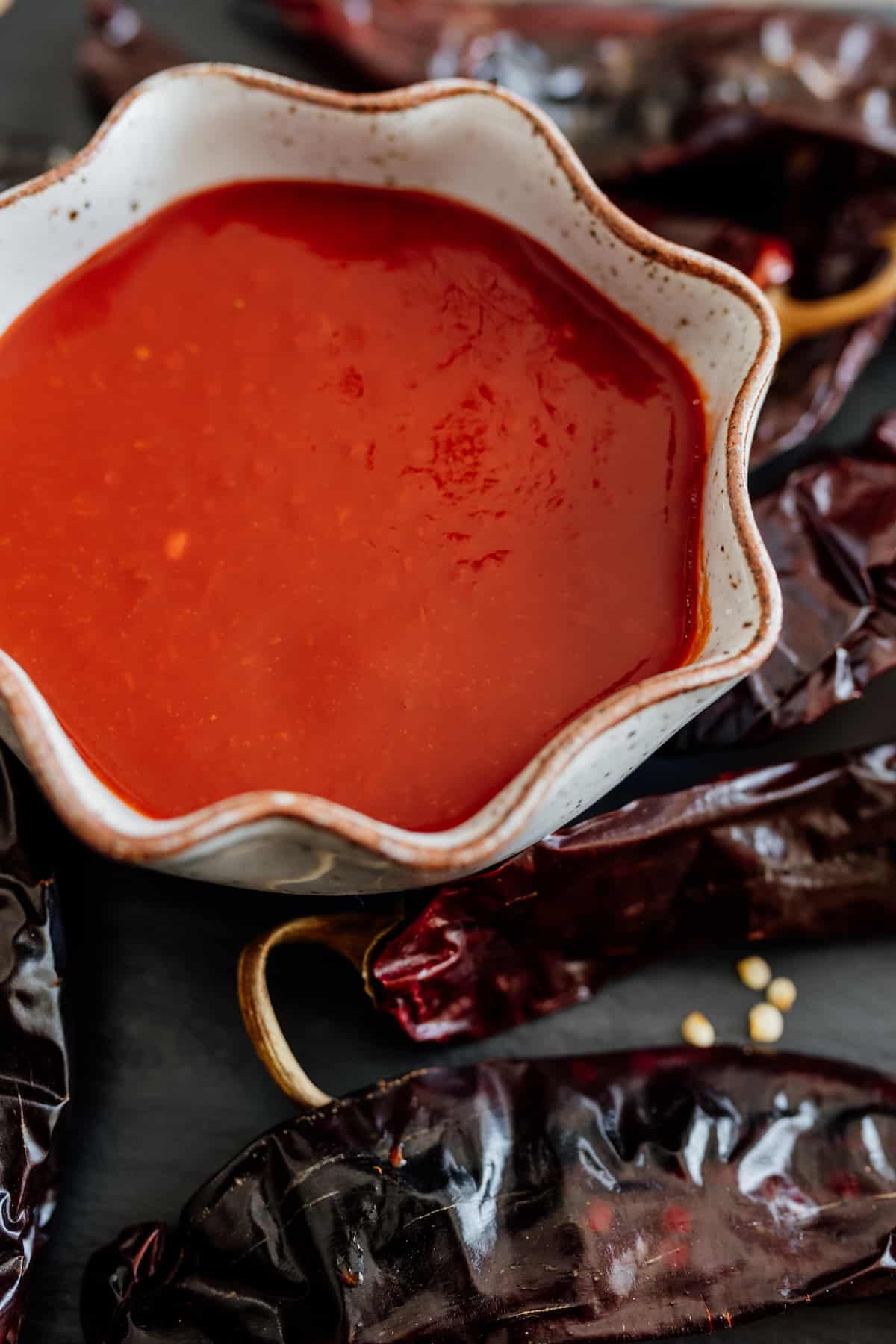
I am so excited to share this classic enchilada sauce recipe with you. This recipe is from our first published Muy Bueno cookbook and it is near and dear to my heart. There are so many ways to use this delicious red enchilada sauce, so I highly suggest you make a big batch and freeze it for easy Mexican meals on the fly.
Once you make this homemade red sauce for enchiladas, you won’t ever go back to the canned stuff. Luckily for us, we live in the age of blenders so we don’t have to use our bare hands to purée them like my grandma did!
What Is Enchilada Sauce
Red chile sauce, often referred to simply as chile colorado (red sauce), is a vibrant and flavorful sauce commonly used in Mexican and Southwestern cuisine. It is made primarily from dried red chile peppers, such as New Mexico, California, guajillo, or ancho chiles, which are rehydrated, blended, and simmered to create a rich and aromatic sauce.
Red chile sauce boasts a deep red color and a complex, slightly spicy flavor profile with notes of earthiness and sweetness, making it a versatile accompaniment to dishes ranging from chicken enchiladas or beef enchiladas and homemade tamales to chile colorado. Its bold and slightly spicy taste adds depth and authenticity to a wide array of dishes, making it a beloved staple in many culinary traditions.
Ingredients & Substitutions
The complete list of ingredients, quantities, and instructions can be found in the printable recipe card below.
- New Mexico chile or California Chile: These chile pods have a thin flesh with an earthy chile flavor and undertones of wild cherries. These are the chile pods my family uses to make red chile sauce, but feel free to use guajillo, pasilla, or ancho. If you want more information on other chiles you could use, you can visit my post on Mexican Chiles for more ideas.
- Water: Fresh water is used to make this red chile sauce. My family does not use the leftover liquid after simmering the dried peppers. I don’t recommend it. The liquid can sometimes become bitter and can ruin your chile sauce.
- Flour: My grandma used to toast the flour in a pan similar to making a roux and then add the sauce to thicken and cook. My mom on the other hand blends the flour in the blender to prevent clumping. Feel free to replace with masa harina or omit the flour if you’d like, but the flour does thicken the sauce.
- Garlic: Using fresh garlic to make red chile sauce enhances its aromatic depth and adds a robust flavor. If you don’t have fresh garlic, feel free to replace with 1 teaspoon of garlic powder.
- Salt: Incorporating salt into red chile sauce elevates its seasoning, contributing to a well-balanced and flavorful sauce. Feel free to season, as needed.
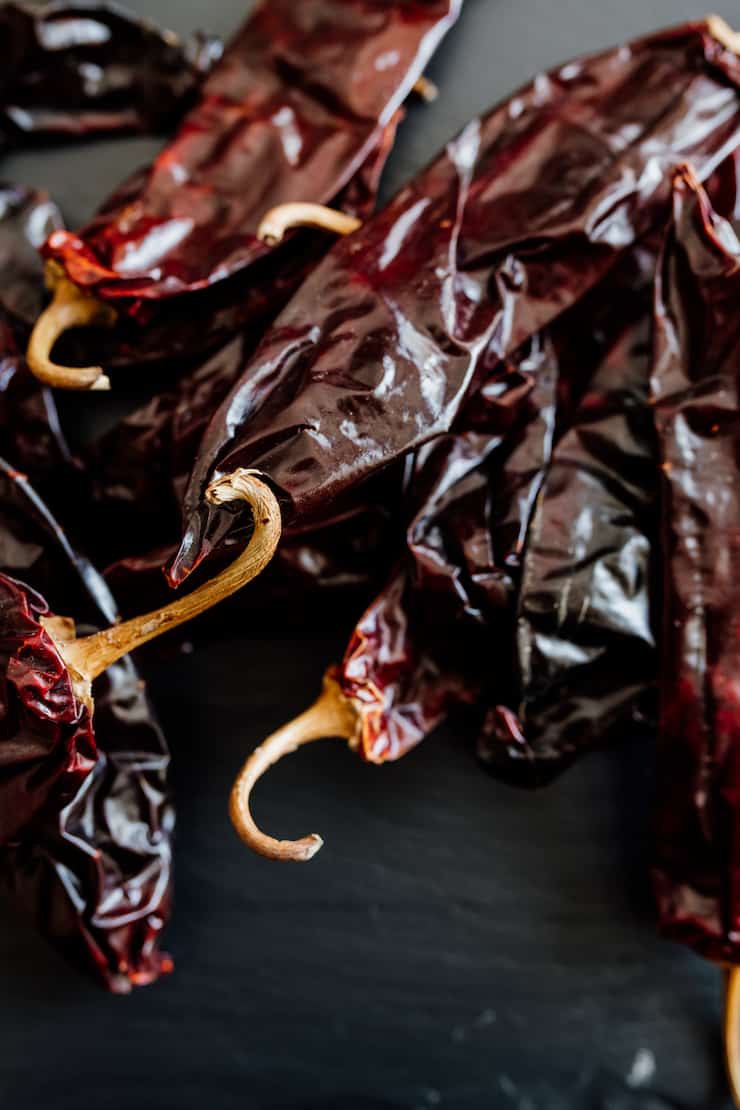
How to make homemade enchilada sauce
Remove stems and seeds from dried chiles: Simply tear off the stem and shake out the seeds. Then reach inside the chile pod to remove additional seeds off and pull off dried veins.
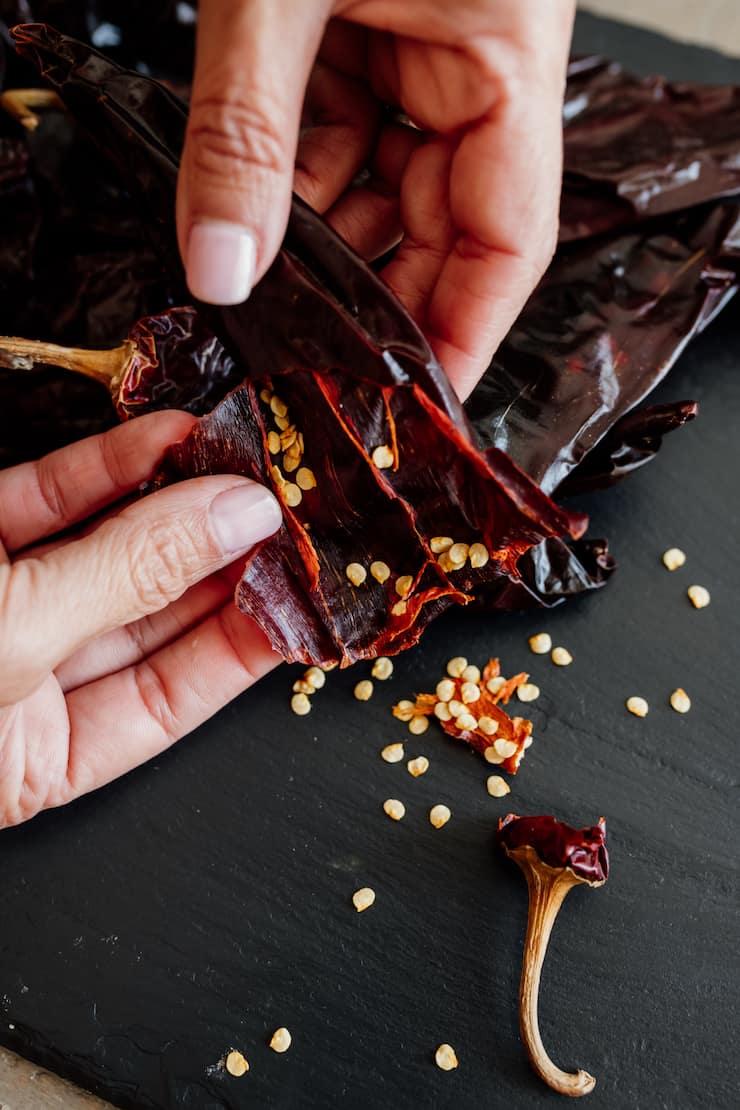
Soften dried chiles: Place your chiles in a pot and barely cover with water. Bring the water to a boil, then drop the heat to a simmer. Simmer the chiles until soft, about 20 minutes, turning halfway.
Drain chiles: Drain your chiles and allow them to cool. If you don’t, the steam can build up in your blender and be dangerous!
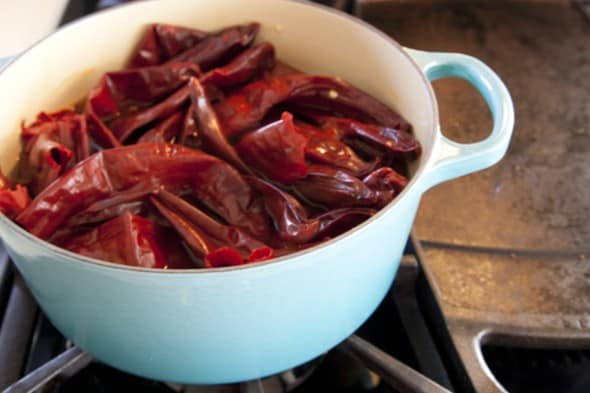
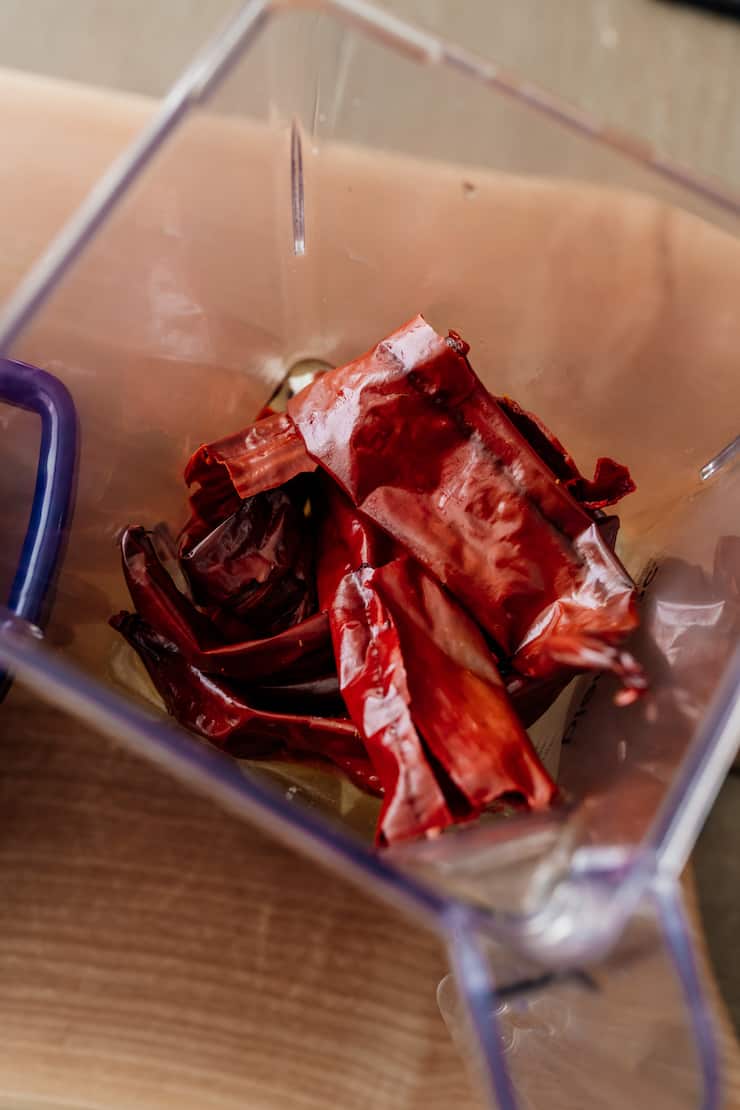
Blend: Add about half of your chiles to the blender with half the water, garlic, flour and salt. Blend until smooth.
Strain: Tip sauce into a conical strainer and use a pestle, spoon or spatula to push it through. If you don’t have a conical strainer, a mesh strainer will work too. Continue blending and straining until complete.
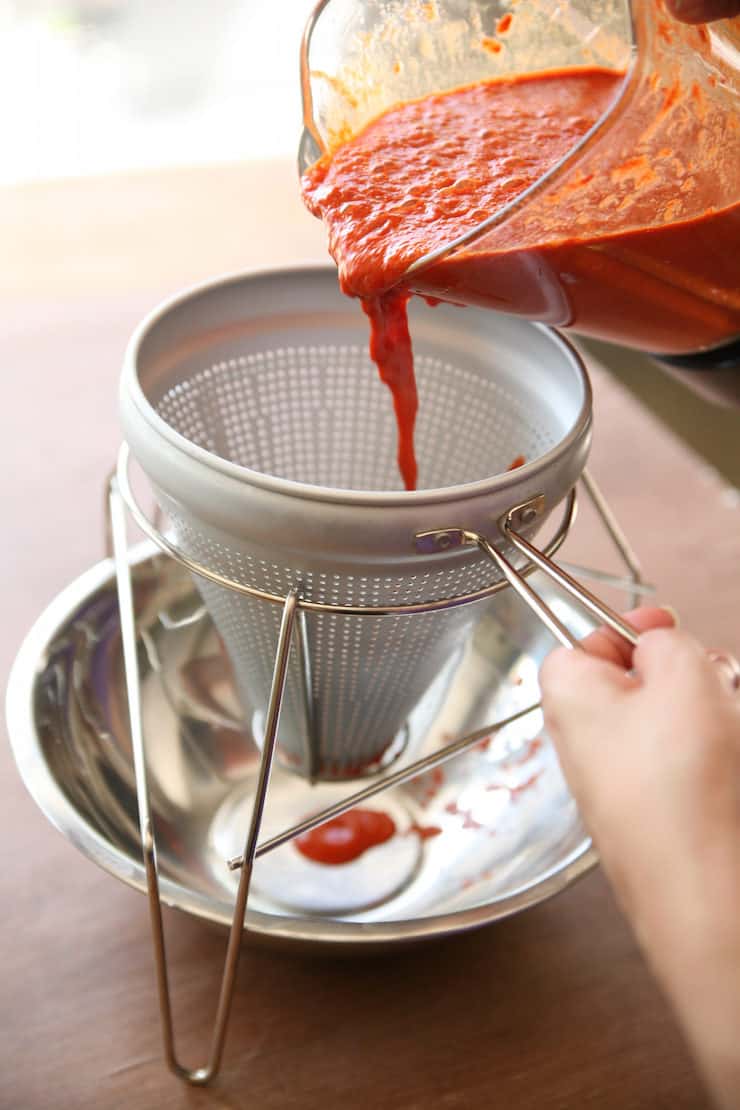
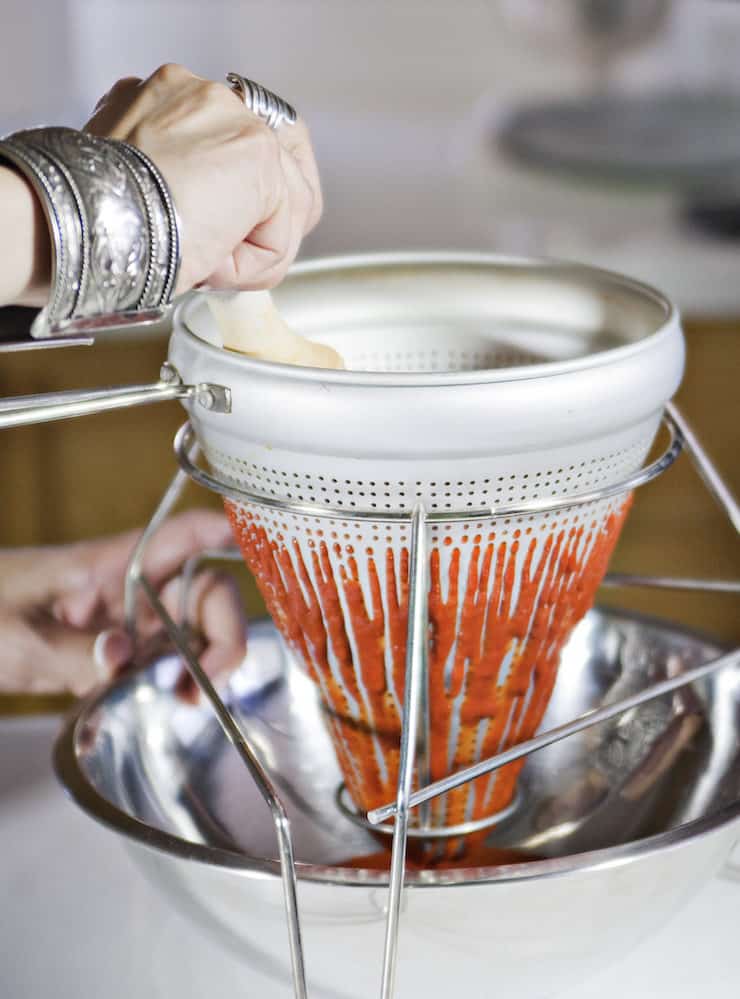
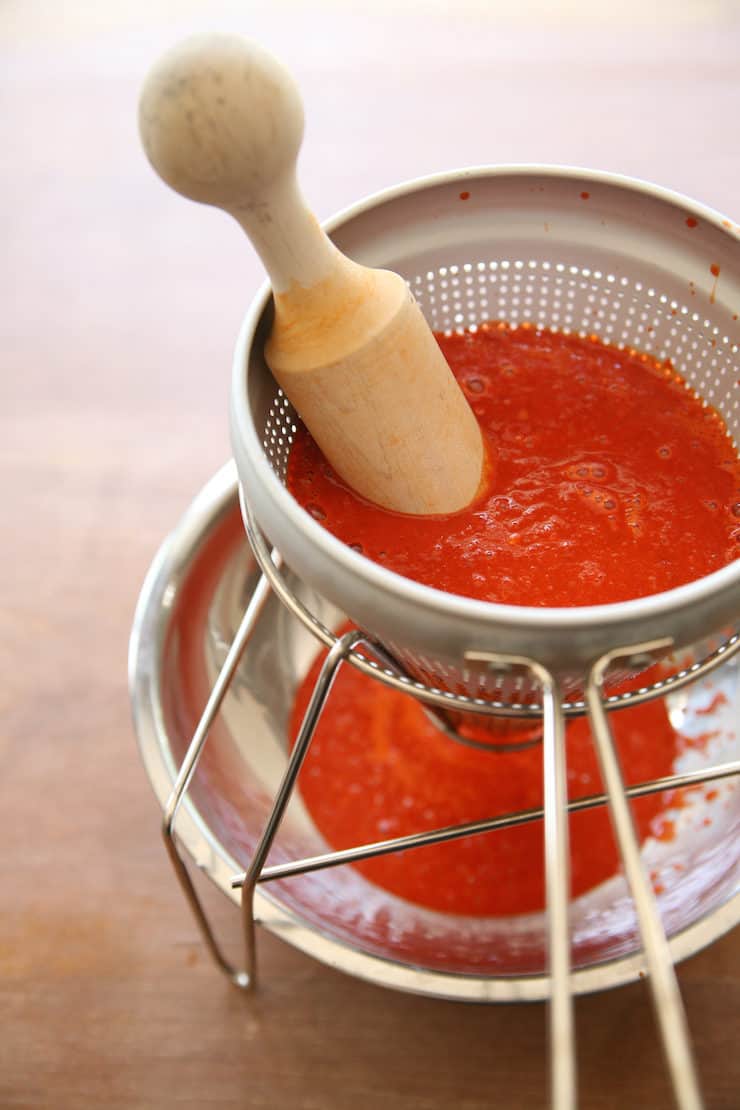
Cook: This sauce is un-cooked. This red enchilada sauce can be stored uncooked or cooked.
Watch the video showing, step by step, how to make homemade red enchilada sauce. Then try all these recipes that aren’t enchiladas to see just how versatile this sauce truly is.
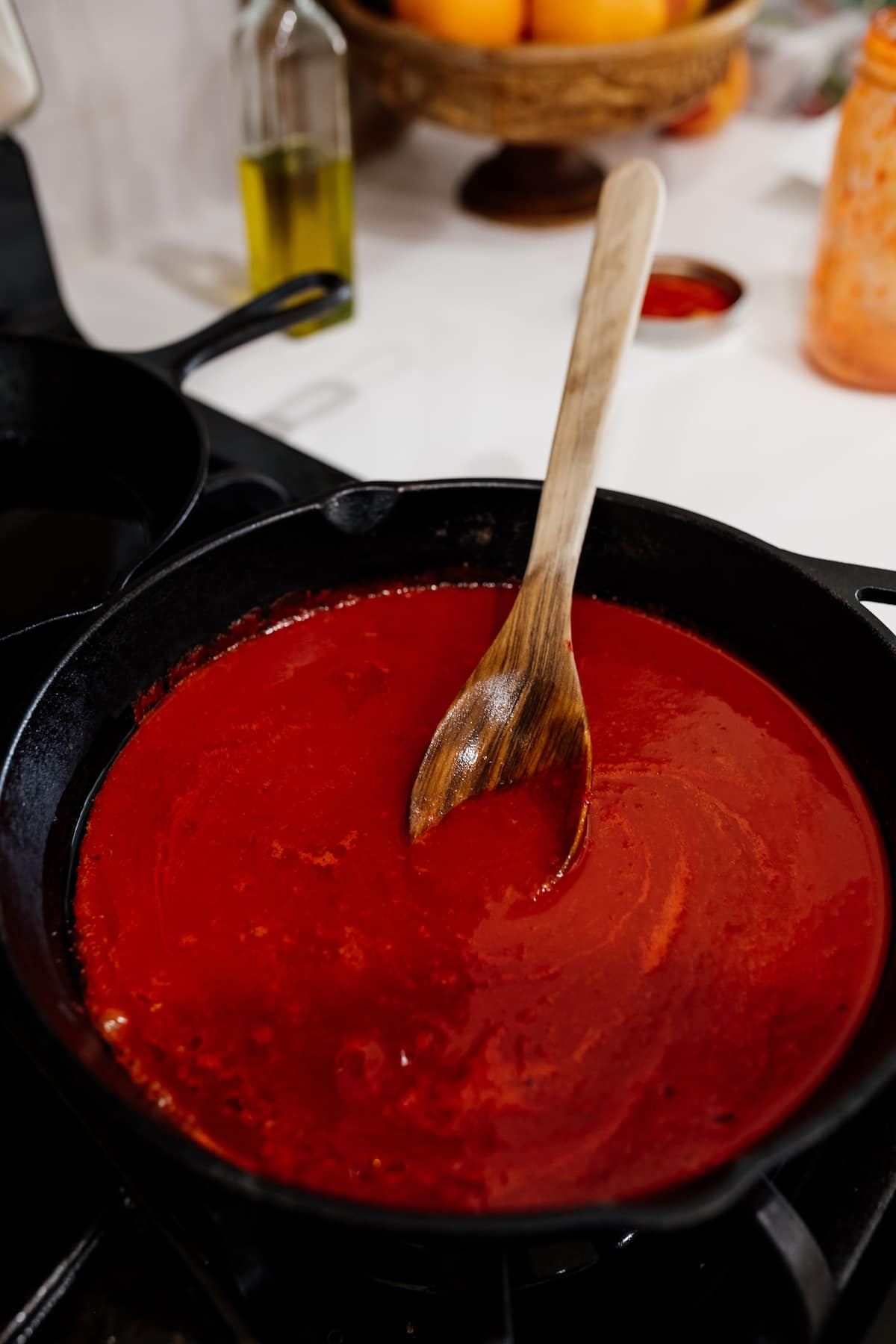
Expert Tips & Tricks
- Work in batches so you do not overwhelm your blender.
- If you don’t have a conical strainer, a mesh strainer will work too.
- Have a high-powered blender? Straining the sauce might not be necessary, but I still do.
Storage Instructions
I love making a big batch of this homemade enchilada sauce and storing it in the fridge in a glass bowl or glass mason jars or freezing it in these freezer-safe plastic containers. It’ll keep up to a week in the refrigerator and up to 6 months in the freezer. Trust me, this stuff is magical for whipping up a hearty, authentic Mexican meal at the drop of a hat.
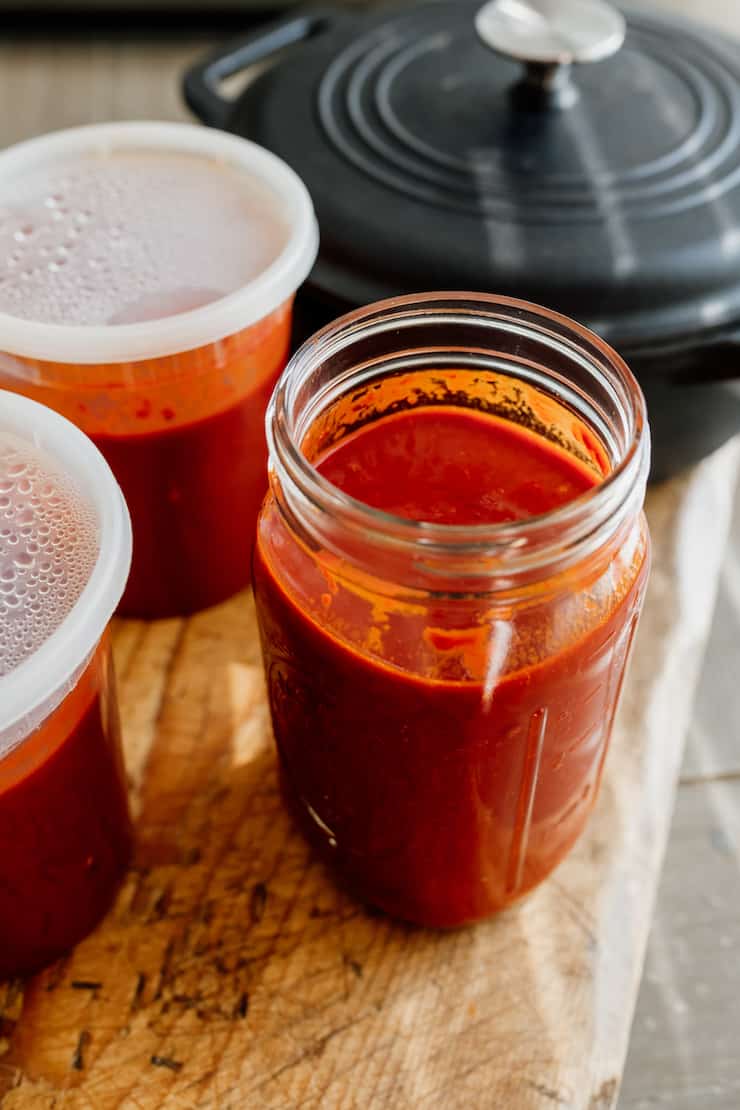
Frequently Asked Questions
Homemade red chile sauce isn’t the same to the canned enchilada sauce often found in stores; they’re worlds apart. Crafted from red chiles, its distinctive earthy and pungent flavor defies easy description, particularly for those who haven’t experienced the Southwest firsthand.
The difference lies primarily in their ingredients and preparation methods. Red chile sauce, such as the sauce in this birria recipe and pozole rojo, is typically made from dried red chile peppers, such as guajillo, ancho, or New Mexico chiles, blended with other ingredients like garlic, onion, and spices. On the other hand, enchilada sauce usually does not have onion, and sometimes includes a tomato base and sometimes thickening agents like flour or masa harina. While both sauces may share some similarities in flavor profile and usage, their distinct ingredient compositions result in differences in taste and texture.
Think of it this way: the French have béchamel, and in Mexico we have this red sauce. It is that ubiquitous. While many people are most familiar with this red sauce for red enchiladas, there are so many other uses for it. From chile colorado stew and homemade tamales, to pozole rojo and braised pollo a la brasa, the options for this homemade red sauce are nearly endless. Making the sauce from scratch takes a while, but once it’s made, it refrigerates and freezes well for other recipes in this blog.
The spiciness of red chile sauce can vary depending on the type of dried chile used in its preparation. Different varieties of dried chiles have varying levels of heat, ranging from mild to extremely spicy. For example, guajillo and pasilla chiles tend to be milder, while arbol chiles pack a significant punch. The heat level of the sauce also depends on whether the chiles are deseeded and deveined before being used, as much of the heat resides in these parts. Additionally, factors such as the quantity of chiles used and the duration of cooking can influence the final spiciness of the sauce. Generally, red chile sauce falls into the medium heat category, but it’s essential to check the specific chile variety and any heat indicators on the packaging for a more accurate assessment.
Salsa roja, translated as ‘red sauce,’ is a spicy condiment prominent in Mexican cuisine. It consists of red tomatoes blended with onions, garlic, chile, and seasoned with salt to taste.
The contrast between the two sauces lies in their preparation method. When making these sauces, removing the seeds and veins of the pepper results in a milder heat level. Additionally, red peppers, being riper than green ones, can offer a sweeter taste, whereas green sauces, like salsa verde tend to have a more herbaceous flavor profile.
Make sure the dried chile pods aren’t hard and brittle. Some recipes require toasting chile pods before simmering, which can lead to a bitter flavor. The water you soak the chiles can be bitter and is why I recommend using fresh water to blend the chile sauce. The flour in this recipe will neutralize some of the bitterness and thicken the sauce a bit in the process.
If your sauce is too spicy, try adding tomato sauce to help mellow it out.
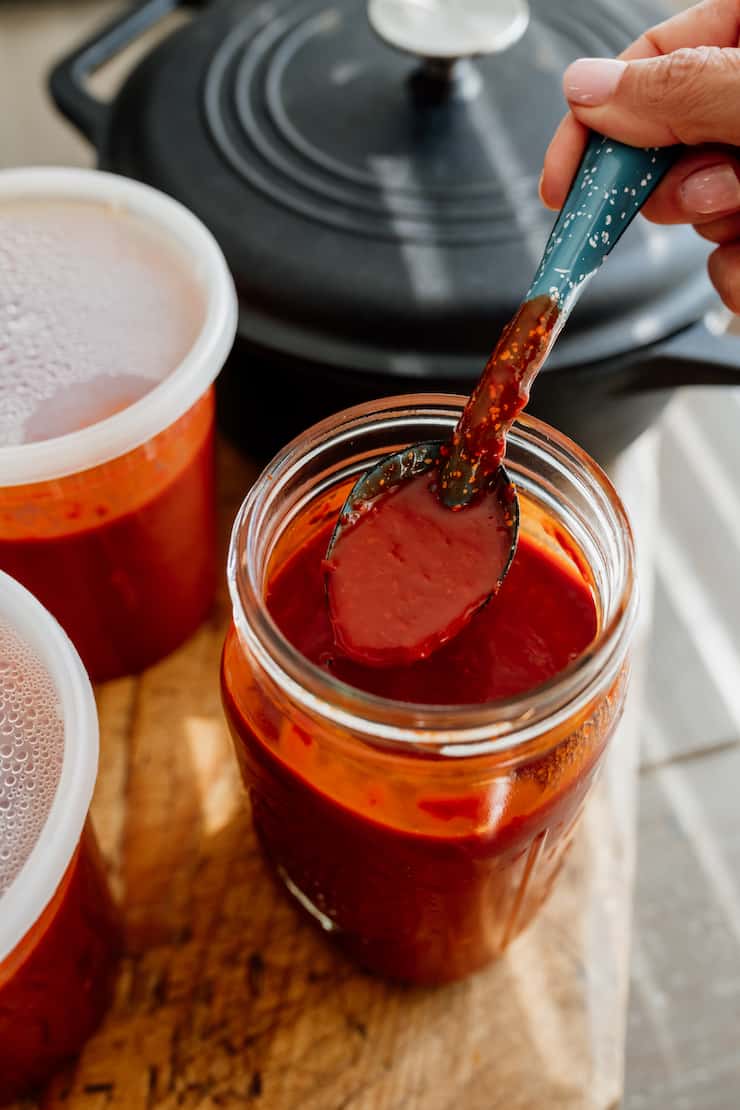
What To Serve With This Recipe
Never buy store bought when you now have this recipe for red enchilada sauce. If you loved this recipe and want more Mexican cooking inspiration, be sure to follow me on Facebook and Pinterest!

Summarize & Save This Content On
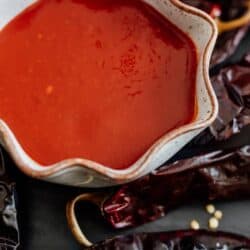
Enchilada Sauce Recipe
Equipment
Ingredients
- 8 ounces California or New Mexico red chile pods
- 6 cups water
- 6 tablespoons all-purpose flour, sub gluten free if necessary
- 4 cloves garlic
- 1 tablespoon salt
Instructions
- Remove stems, seeds, and veins from the chile pods. Place in a colander and rinse well with cool water.
- Add the chiles to a large pot and add enough water so they are just covered. Bring water to a boil. Lower the heat, cover, and simmer for about 20 minutes. After 10 minutes turn the chiles over with tongs to make sure the chiles soften evenly. Drain cooked pods and allow time to cool down before blending. Discard water.
- Fill blender with 3 cups of water, half of the cooled chile pods, 3 tablespoons flour, 2 cloves garlic, and half of the salt. Blend until smooth. Strain sauce through a fine sieve to remove skins and seeds; discard skins and seeds. Repeat blending and straining process with remaining water, pods, flour, garlic, and salt. If necessary, season with more salt.
Video
Notes
- Make sure the dried chile pods aren’t hard and brittle.
- Always wash your hands after working with chiles. You can wear gloves if you wish.
- Are you gluten free? No problem! Just sub in a 1-to-1 gluten free flour substitute.
- This sauce is un-cooked. This sauce can be stored uncooked or cooked.
- To cook sauce: Heat 1 tablespoon of olive oil in large skillet. Pour 4 cups chile sauce into skillet and stir. Taste and season with salt if needed.
- This sauce can be made in advance and kept in airtight containers in the refrigerator or freezer.
- Red chile sauce can be stored in the refrigerator for up to one week or frozen for up to six months.
LOOKING FOR RECIPES TO USE THIS HOMEMADE RED CHILE SAUCE? TRY THESE:
Nutrition
Nutrition information is automatically calculated, so should only be used as an approximation.
Photography by Jeanine Thurston & Jenna Sparks
This recipe is also published in the Muy Bueno cookbook.

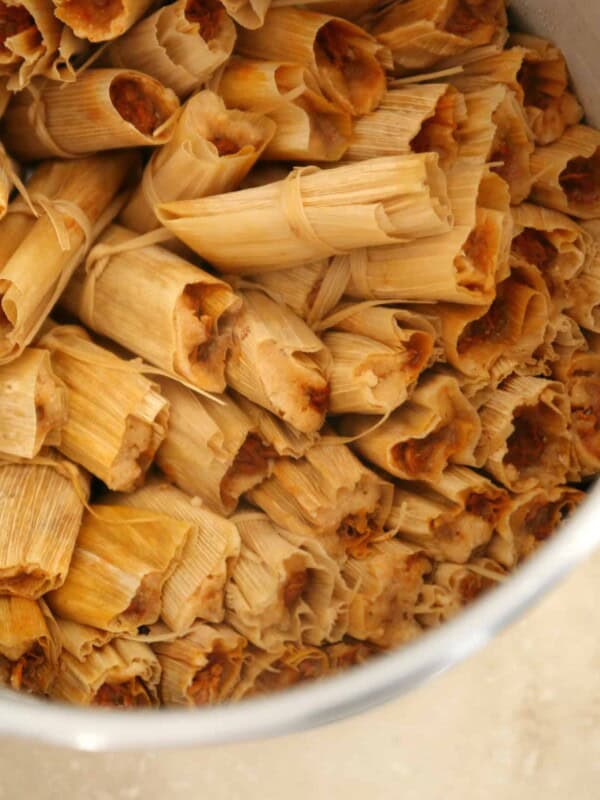
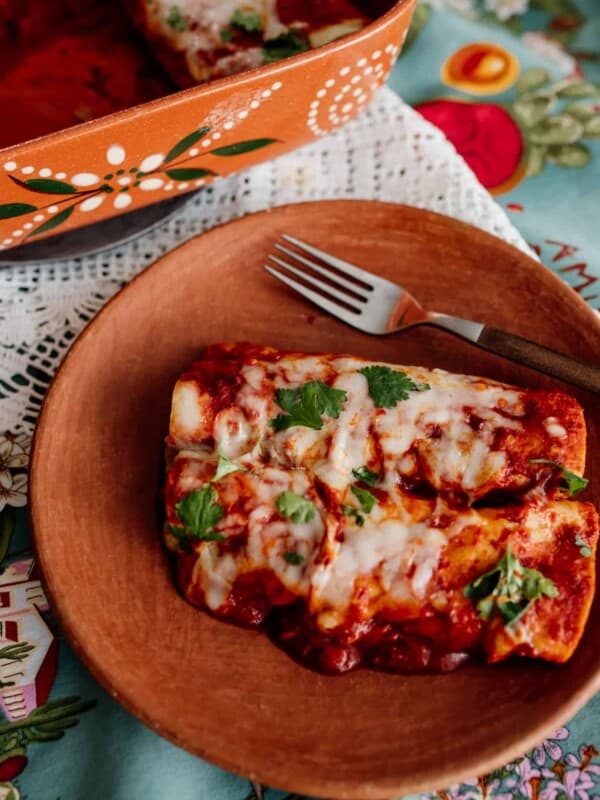
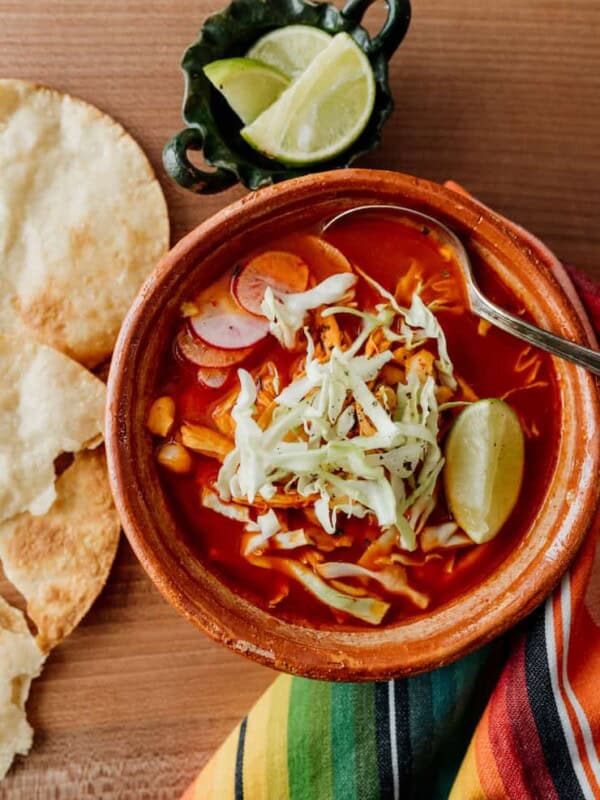

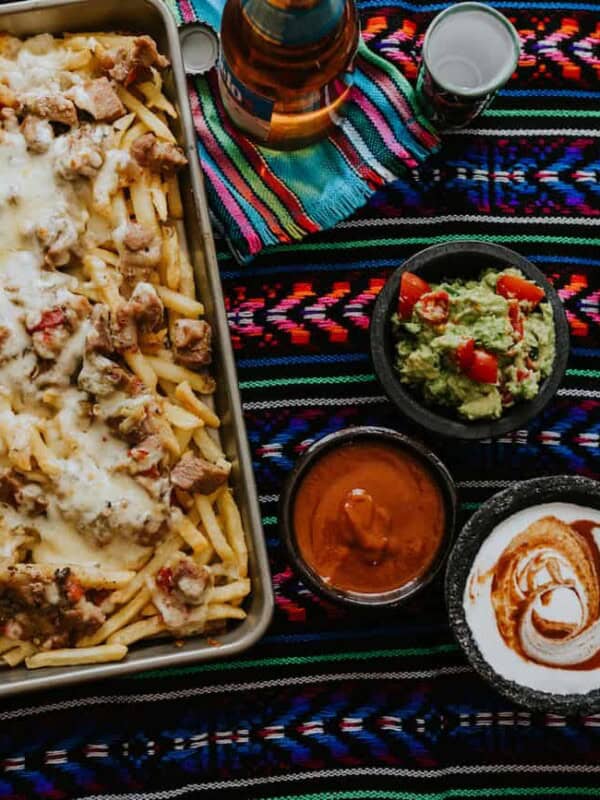
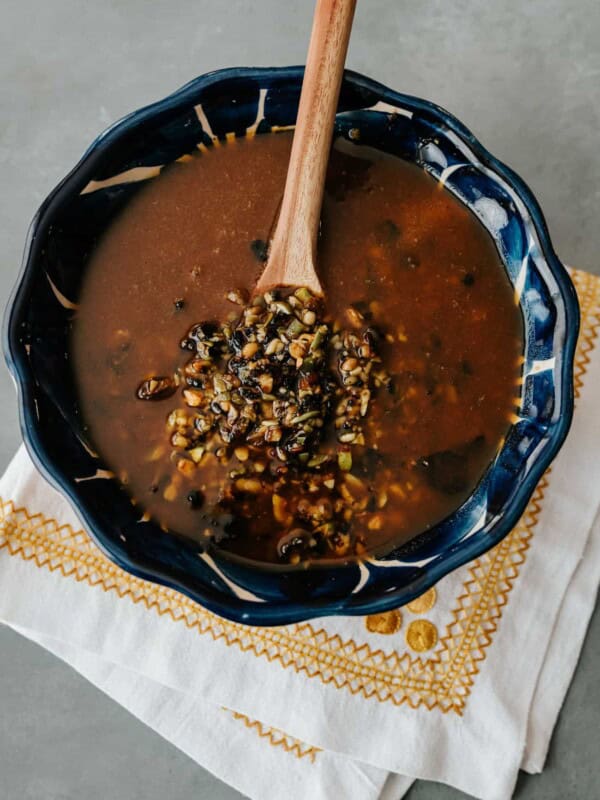
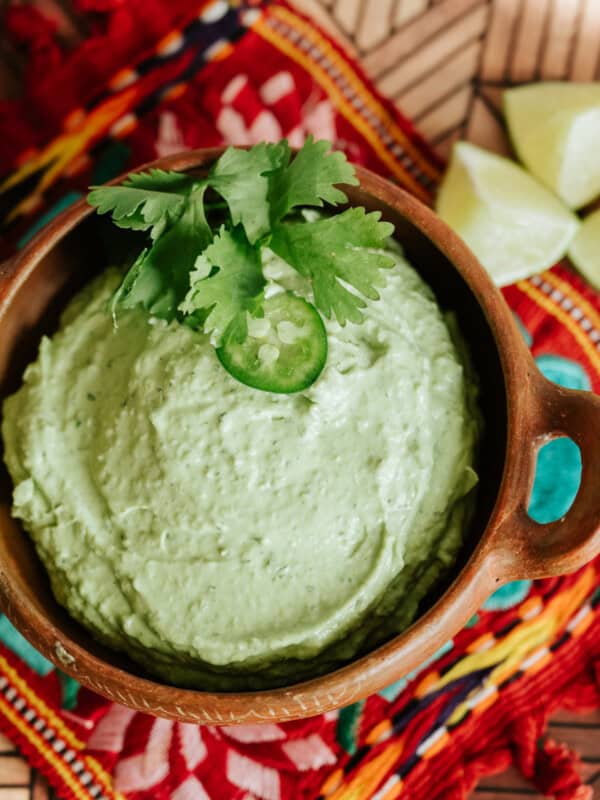









How do you cook it? Is it with oil or just simply heat up the chile? Thank you for your help.
Hi Diana, Heat 1 tablespoon of olive oil in large skillet. Pour 4 cups chile sauce into skillet and stir. Taste and season with salt if needed.
This is THE best red sauce recipe! It is easy and allows for layered and flavorful dishes. A go to and on repeat. A double batch allows for one in the freezer to have on hand and makes for a quicker meal prep. Thank you, you are the best place for flavorful and authentic Mexican recipes for those of us without a family recipe box. 🙂
Made this tonight to go with destructured chicken enchiladas (no tortilla) being served over cilantro lime rice. It was perfect! The process was quick and easy, and the result was a mild, fresh sauce—the perfect complement to the enchiladas. I used the sauce AFTER everything had been cooked. Want to cook some sauce and compare with the uncooked sauce. So much better than canned and I can control the salt/sodium